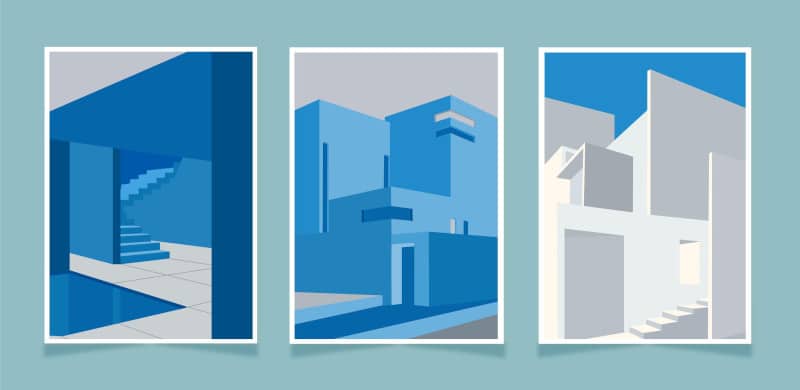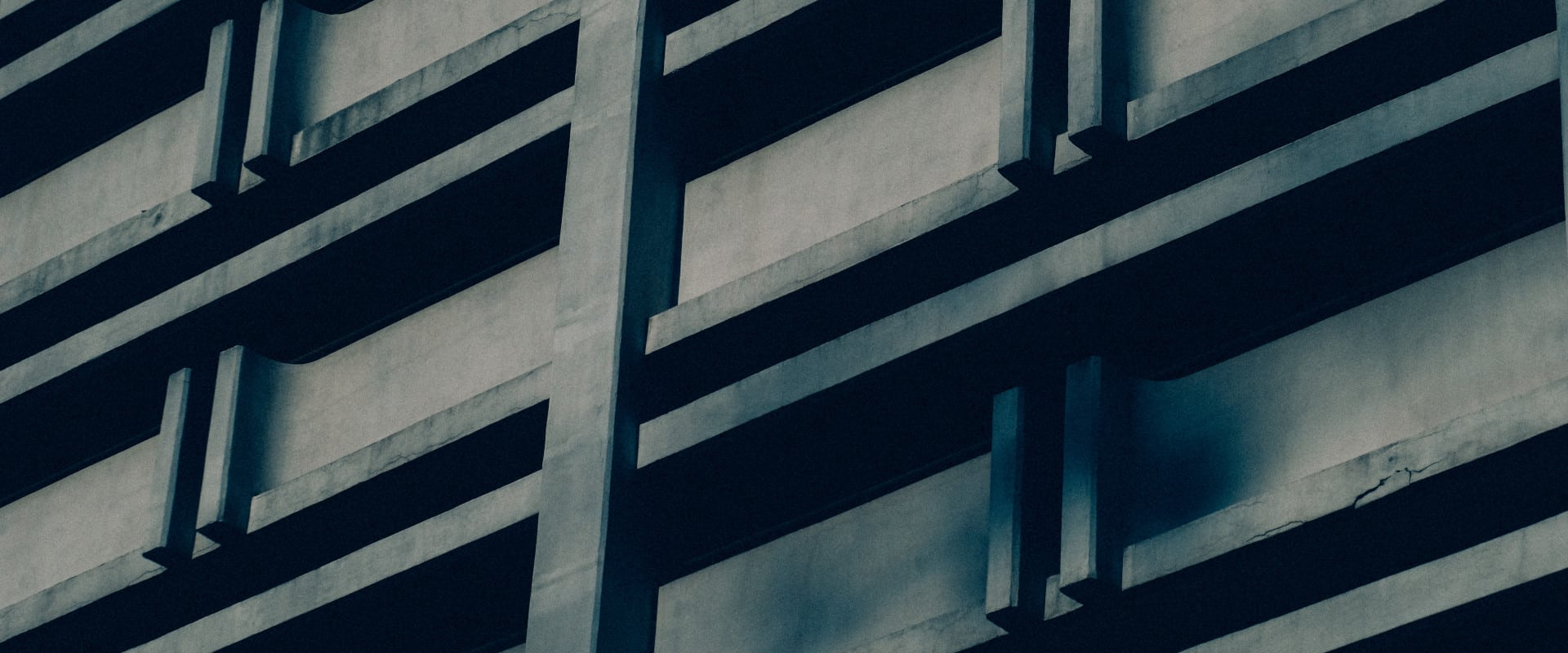Yeah, right.
You may think that you already know my attitude towards Brutalist Design based on these three cunning observations...
You make a compelling case, and yet, I adore brutalist design online and in print. Despite the distinctly unbrutalist branding of The One Stop Web Shop, I prefer clean, functional design with lashings of white space.
“Why on Earth,” you ask, “did I set out to create a website that isn’t even slightly brutalist?”
If you’re curious about that and a masochist, click here. But as this article is about to get more entertaining, I’d scroll down instead, if I were you.

...may, or may not, have once walked into a bar to humorous effect.
A French architect named Charles-Édouard Jeanneret, a name that nobody can spell, has been accused of popularising Brutalist architecture. But we know for a fact that he wasn’t working alone.
One or two of the facts in this section may have been invented, but in my defence,2 I only did that to trick you into thinking this article was written by AI.
Anyway, back to brutalism...
Like most bad ideas, Brutalist Design descended from Modernism. Its proponents claimed to be reacting against the ornamental and nostalgic styles of the 1940s.
That might be true, but I wonder whether they were actually covering up a lack of talent.
Emerging in the United Kingdom amid post-World War II reconstruction, Brutalist Design addressed the need for affordable, utilitarian buildings using inexpensive materials during a time of resource scarcity.
The main characteristics of Brutalist design are...
In other words, Brutalist design is about building something as quickly, cheaply, and unimpressively as possible.
When it comes to architecture, it’s not my thing. But when it comes to graphic design, there is something about the brutalist approach that I find very compelling.
Simple shapes, stark fonts, plenty of white space, and a desaturated colour palette work. They satisfy and nourish my soul in a way that square, grey, concrete tower blocks don’t.
Perhaps that’s why graphic designers refer to Brutalist Design as neo-brutalism, further reinforcing the fact that the world of design doesn’t tend to attract overly pretentious people.
Why is brutalism the coming thing in web design? There are several reasons for this.
One reason is that old design styles never die, but are caught in an endless cycle of birth, death, and reincarnation. The welcome return of Bell-Bottom trousers5 will confirm later this year.
Brutalist Design favours large, bold fonts. So do the elderly. As the New Zealand population ages, it should come as no surprise to find the return of a minimalist design style that prizes high-contrast and very big writing.
Then we come to CSS, the poorly implemented and very confusing language that styles the web. The people who control CSS are psychopaths who enjoy inflicting pain on everybody else. Were the members of the W3C born in late fifteenth-century Spain, every single one would have worked for the Inquisition.
That’s why the W3C’s standards are written in such a way as to guarantee that no browser can possibly implement the same layout in the same way.
Have you ever wondered by every single web designer is bald? CSS is the reason. But Web Designers have embraced the square, stark simplicity of Brutalist Design as a countermeasure to the perfidy of CSS.
The final reason is the weather. It’s changing in ways that alarm people prone to worry, and in an effort to stop this from happening, some web designers like to engage in Brutalist Design to lessen the load on the world’s web servers.
Simple designs mean less processing power, and that, in turn, means less electricity is required to drive the world’s websites.
The sort of people who enjoy sounding profound while talking bollocks, tell me the return of Brutalist Design signals a desire to project authenticity and evince6 anti-corporate rebellion.
Of course, the people who say such things work for the sort of expensive design companies that get hired by the very corporations trying so hard to appear authentic. If that’s not a happy coincidence, I don’t know what is!
Brutalism is a design language that focuses on simple geometric shapes, high levels of contrast, bold fonts, and monochrome colour palettes.
Brutalism can be stunning, especially if it’s deployed during a time when elaborate, highly-colourful designs are in fashion.
Right now, Brutalist Design is en vogue. It is de rigueur, which is French for socially normal, which is the most charming thing anyone has ever said about it. And as I write this, I can’t help but notice that today is July 14. If you happen to be French, then I wish you a happy Bastille Day, mon ami!



Copyright © 2025 TheOneStopWeb.Shop. All rights reserved.